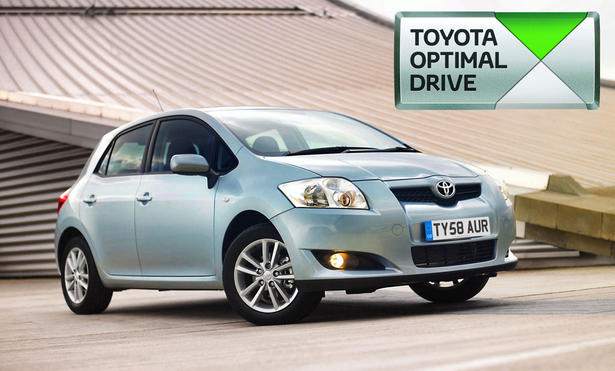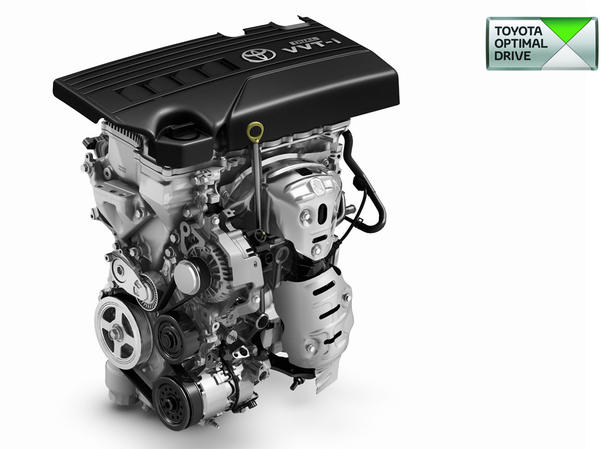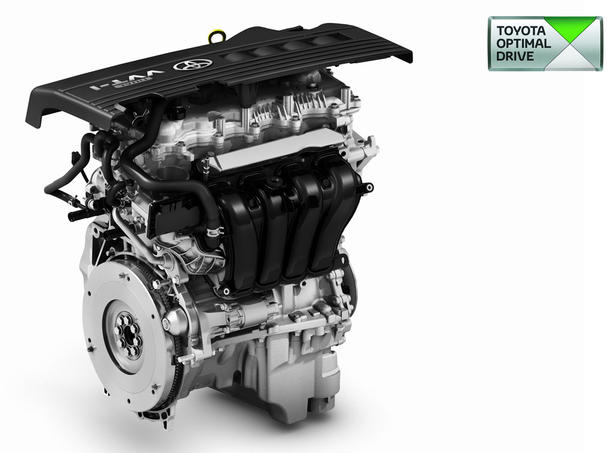
The Japanese manufacturer released today the details of the new Toyota Auris Stop&Start powered by a 1.33-litre Dual VVT-i petrol engine. The Toyota Auris Stop&Start is the first model to go on sale in the UK that features the Toyota Optimal Drive technology which offers optimum engine efficiency, fuel economy and reduced emissions. The Toyota Auris Stop&Start offers a 135g/km CO2 emissions level and a fuel economy in a combine cycle of 48.7mpg.
The new 1.33-litre Dual VVT-i engine, built in Deeside, North Wales, outputs 100bhp (101 DIN hp) and is coupled with a new 6-speed manual transmission.
The Toyota Auris Stop&Start price for the UK market starts at £12,705.
Toyota Press Release:
The Toyota Auris gains a competitive advantage in the C-segment hatchback market with the introduction of a new engine that delivers lower emissions, better fuel economy and improved power and torque. And with the benefit of Toyota Stop&Start technology, environmental performance is further enhanced, with particular benefit in urban traffic.


The new Auris 1.33 Dual VVT-i Stop&Start has the distinction of being the first Toyota to go on sale in the UK with the benefit of Toyota Optimal Drive, a breakthrough in powertrain engineering and design technology that will be a feature of all future Toyota models.
Toyota Optimal Drive
Toyota Optimal Drive is not a single solution, it covers a range of different technologies that can be applied to achieve real-world results in environmental performance, making the best use possible of Toyota’s formidable engineering
skills. The result is environmental efficiency, but no loss of driving pleasure.
The principal aims of Toyota Optimal Drive are to:
Reduce harmful emissions
Increase fuel combustion efficiency
Cause no compromise in driving pleasure
This contrasts with the approach of some car manufacturers, which have elected to launch special eco-themed models with design, engineering and equipment tweaks to achieve lower emissions and better fuel consumption, often at the cost of comfort and driving pleasure.
Like Hybrid Synergy Drive, as featured in Prius, Toyota Optimal Drive is a central element in Toyota’s strategy for environmental leadership and its long term ambition of building the ultimate zero emissions car.
All new Toyota models will benefit from Toyota Optimal Drive, with new iQ, Avensis and Auris 1.33 Stop&Start leading the way. Each provides significant gains in environmental performance
and running costs, while maintaining high standards of quality, comfort and driver rewards.
New 1.33-litre Dual VVT-i engine with Toyota Optimal Drive technology
The all-new 1.33-litre Dual VVT-i engine represents the latest in Toyota lightweight powertrain technology. Benefiting from Toyota’s motorsport experience, where compact and powerful engine design is crucial, the new unit is 54mm shorter and 127mm narrower than the previous 1.4-litre VVT-i and weights 13kg less. The result is a four-cylinder engine that is the same size as a three-cylinder 1.0-litre VVT-i. Its small bore and long stroke design gives a narrow block and reduces weight to give a very high power-to-weight ratio.
New pistons were developed with a smaller contact area to help produce quick and efficient combustion. Piston weight was also significantly reduced, from 280g to 180g – a 36 per cent saving – which means they use less energy. For leaner combustion, an oil jet was integrated into the design.
The new engine gives a solid torque curve that is ideal for everyday driving. Meticulous engineering has brought an output of 100Nm per liter, with a maximum 132Nm developed at 3,800rpm.
Toyota engineers streamlined the intake channel and used computer simulation to optimize airflow. Surfaces were made smooth and any angles or sharp edges were rounded off to help reduce turbulence.
More weight has been saved by using a cylinder head cover and resin intake manifold. In addition, the highly rigid aluminum crankcase is connected to the transaxle casing, improving rigidity of the joint in the powertrain and thus reducing noise and vibration. An all-new camshaft profile was designed, reducing weight and friction.
Dual VVT-i
Dual VVT-i (variable valve timing – intelligent) provides continuous, variable control of both the intake and exhaust valves to optimize performance and fuel consumption. This also yields more torque at low engine speeds and helps reduce exhaust emissions.
Toyota Stop&Start
Auris is the first model in Europe to benefit from Toyota Stop&Start technology. When the car is stationary, with the transmission in neutral and the driver’s foot off the clutch pedal, the engine automatically and quietly stops to reduce fuel consumption and emissions. When the driver re-engages the clutch, the engine automatically restarts. This brings particular benefits in urban traffic, with a potential 15 per cent improvement in the amount of fuel used and CO2 emissions.
Stop&Start is very quiet, smooth and refined in its operation. In a world-first design, the system has a permanently engaged starter gear mechanism: the starter motor is in direct contact with the ring gear on the engine, which means the engine stops and starts quickly and quietly. Compared to the 1.4 VVT-i, the start-up noise level has been reduced by 9dB and starting time cut from 0.7 to 0.4 seconds.
New six-speed manual transmission
The engine is matched to newly developed six-speed manual transmission, with ratios calculated to deliver the best possible balance of performance and fuel economy. The twin-shaft unit is 11 per cent smaller and has 15 per cent fewer components than the five-speed unit, but has a higher torque capacity. Friction is reduced and the driver enjoys an improved gear shift feel. Using an extra gear compared to the transmission used in the previous Auris 1.4, VVT-i, it also gives more refinement at high speed.
Built in Britain
From October 2009, the 1.33-litre Dual VVT-i engine will be manufactured at Toyota Motor Manufacturing UK’s (TMUK) factory at Deeside in North Wales. Almost €115 million has been invested in the plant in the past year to prepare for production of the new engine, which comes in addition to the €1.12 billion invested in operations since the factory opened in 1992.
Deeside currently produces 1.4, 1.6 and 1.8-litre VVT-i petrol engines at a rate of about 185,000 units a year. It also undertakes casting and machining of engine sets for export to other Toyota plants around the world.
Until Deeside production comes on stream Auris will be fitted with engines manufactured in Japan. Five-door versions of Auris are also built in Britain at TMUK’s Burnaston plant, near Derby.














